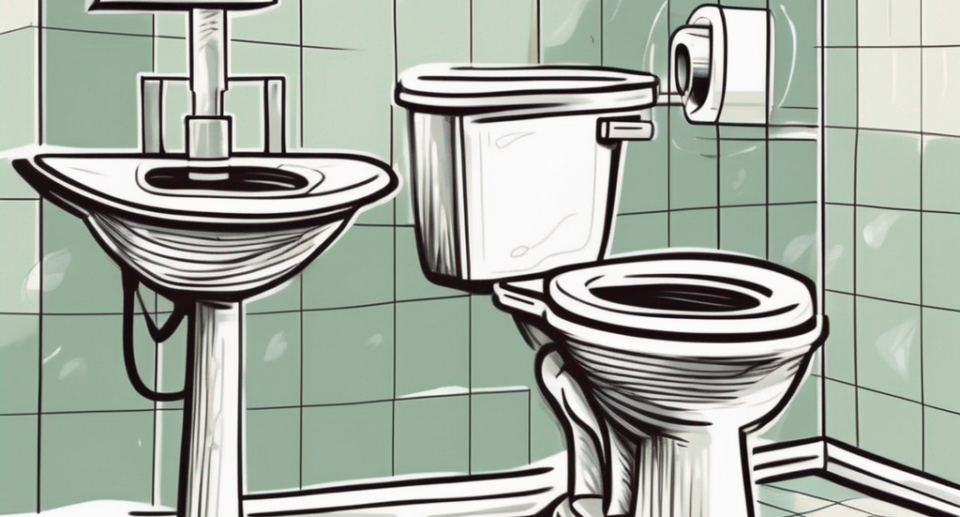Simple and Affordable Ways to Soundproof Your Room from Traffic and Neighbours

Living in a noisy neighbourhood can be frustrating and affect your quality of life. Constant traffic noise and noisy neighbours can disrupt your sleep, concentration, and overall well-being. Fortunately, there are simple and affordable ways to soundproof your room and create a peaceful sanctuary. In this article, we will explore effective techniques, budget-friendly tips, and cost-effective DIY solutions for soundproofing your room from traffic and neighbours.
Mastering the Art of Soundproofing
Soundproofing a room involves understanding the science of sound containment and implementing methods to reduce the transmission of noise. It’s important to note that complete soundproofing is a myth, but significant noise reduction can be achieved.
When it comes to soundproofing, there are a plethora of effective techniques that can be employed. One approach is to add mass and density to the room’s walls, ceiling, and floor. By incorporating soundproofing materials such as mass-loaded vinyl, acoustic foam, or soundproof curtains, you can create a barrier that helps to absorb and block out unwanted noise.
But let’s not forget about the often overlooked aspect of sealing gaps and cracks. These tiny openings may seem insignificant, but they can be a major source of noise leakage. By using weatherstripping to seal any gaps or cracks, you can significantly minimize the amount of noise that seeps into your sanctuary.
Effective Techniques for Soundproofing a Room
There are several effective techniques for soundproofing a room. One approach is to add mass and density to the room’s walls, ceiling, and floor. This can be achieved by using soundproofing materials such as mass-loaded vinyl, acoustic foam, or soundproof curtains. Additionally, sealing gaps and cracks with weatherstripping can help minimize noise leakage.
Another technique that can be employed is the strategic placement of furniture. Placing bookcases or shelves against the walls can act as natural sound barriers, as they help to break up sound waves and prevent them from bouncing around the room. Not only does this provide an aesthetically pleasing solution, but it also adds an element of functionality to your space.
Budget-Friendly Tips for Soundproofing against Traffic and Neighbours
Not all soundproofing methods require a hefty investment. There are budget-friendly tips that can significantly reduce noise from traffic and neighbours. Placing bookcases or shelves against the walls can act as natural sound barriers. Installing heavy curtains or acoustic panels can also help absorb sound waves. Using door draft stoppers can prevent noise from entering through gaps under doors.
Furthermore, let’s not forget about the power of nature. Incorporating plants into your space not only adds a touch of greenery but can also help to absorb sound. Plants have the remarkable ability to absorb and dampen noise, making them an excellent addition to any soundproofing strategy.
Understanding the Science of Sound Containment
To effectively soundproof your room, it’s crucial to understand the science behind sound containment. Sound travels in waves and can be transmitted through various mediums such as air, walls, and windows. Knowing how sound travels and which materials can block or absorb it is key to successful soundproofing.
Exploring the Challenges of Soundproofing
Soundproofing can present challenges, especially in older buildings or apartments with thin walls. Identifying the weak spots where sound easily enters or escapes is the first step towards finding solutions. Common trouble areas include windows, doors, and vents.
One of the main challenges in soundproofing is dealing with airborne sound transmission. Airborne sound travels through the air and can easily pass through gaps or cracks in walls, windows, or doors. This is why it’s important to seal any openings or gaps using materials such as acoustic sealant or weatherstripping. By doing so, you can significantly reduce the amount of sound that enters or escapes your room.
Another challenge is dealing with impact noise, which is caused by vibrations traveling through solid structures. This type of noise is commonly heard when someone is walking on a floor above or when objects are dropped. To minimize impact noise, it’s essential to use materials that can absorb or dampen vibrations. Installing carpet or using rubber underlayments can help reduce the impact noise and create a more peaceful environment.
Furthermore, it’s worth mentioning that the density and thickness of materials play a crucial role in soundproofing. Dense materials, such as mass-loaded vinyl or acoustic foam, are effective in blocking sound waves. Thicker walls or double-glazed windows can also provide better sound insulation. Understanding the properties of different materials and how they interact with sound waves can help you make informed decisions when soundproofing your space.
Debunking the Myth of Complete Soundproofing
It’s important to note that achieving complete soundproofing is nearly impossible. Soundproofing techniques aim to minimize noise transmission, but some noise may still be present. Understanding this will prevent unrealistic expectations and frustration.
When it comes to soundproofing, there are a multitude of factors that can affect its effectiveness. The materials used, the construction of the building, and even the frequency of the sound can all play a role in how well a space can be soundproofed. For example, while thick walls and double-glazed windows can help reduce noise, they may not completely eliminate it.
Another important aspect to consider is that sound can travel through various pathways. Even if you manage to soundproof your walls, sound can still find its way through doors, windows, and even the floor or ceiling. This is why it’s crucial to take a holistic approach when attempting to soundproof a room or building.
Identifying the Source of Unwanted Noise
Before embarking on soundproofing projects, it’s essential to identify the source of unwanted noise. This can be traffic noise, noisy neighbours, or even structural vibrations. Identifying the source will help you determine the most effective soundproofing methods.
When it comes to traffic noise, it’s important to consider the proximity of your property to busy roads or highways. The intensity of noise can vary depending on factors such as the volume and speed of passing vehicles, as well as the type of road surface. For example, a gravel road may produce more noise compared to a smooth asphalt road. By understanding the specific characteristics of the traffic noise, you can better tailor your soundproofing solutions.
Noisy neighbours can be a common source of frustration, especially in densely populated areas. The type of noise can vary greatly, ranging from loud music and conversations to footsteps and slamming doors. It’s worth noting that different materials and structures can transmit noise differently. For instance, sound can easily travel through thin walls or floors, while thicker and more insulated surfaces can provide better soundproofing. By identifying the specific areas where noise is entering your space, you can focus your soundproofing efforts accordingly.
Essential Methods for Soundproofing
There are various essential methods for soundproofing that can be tailored to suit different budgets and noise challenges. Let’s explore some proven techniques.
Proven Soundproofing Techniques for Every Budget
Soundproofing techniques can range from simple and affordable to more advanced and costly options. Regardless of your budget, there are effective solutions available. Installing soundproof curtains, adding insulation to walls, and using acoustic sealant to fill gaps are examples of techniques that can be implemented on any budget.
How to Soundproof a Room from Traffic Disturbance
Traffic noise can be a major disturbance, especially if you live near a busy road. Soundproofing your room from traffic noise requires a combination of techniques. Installing double-glazed soundproof windows, sealing gaps in windows and doors, and using soundproof curtains can significantly reduce traffic disturbance.
Achieving Noise Reduction through Window Soundproofing
Windows are often a weak point for noise transmission. Soundproofing windows can greatly reduce noise infiltration. Applying window film, adding weatherstripping, or using soundproof window inserts are effective methods to achieve noise reduction.
Dealing with Noisy Neighbours: Soundproofing Solutions
Noisy neighbours can be a challenge to deal with. However, there are soundproofing solutions that can improve your living conditions. Creating a buffer zone by adding bookshelves or soundproof curtains along shared walls can help reduce noise from neighbouring units. Installing acoustic panels or using white noise machines can also mask unwanted sounds.
Creating a Serene Bedroom: Soundproofing Tips
A peaceful and tranquil bedroom is essential for restful sleep. Soundproofing your bedroom can shield you from external disturbances and create a serene environment. Using thick carpets or rugs, placing a white noise machine near your bed, and investing in a good set of earplugs can contribute to a more peaceful sleep environment.
Cost-Effective DIY Soundproofing Solutions
If you’re on a tight budget, there are cost-effective DIY solutions for soundproofing your room. These solutions can be simple yet effective in reducing noise infiltration.
Simple and Affordable Ways to Soundproof a Room
Soundproofing a room doesn’t have to break the bank. Simple and affordable methods can be just as effective. Using acoustic caulk to seal gaps in walls, adding insulation to doors, and hanging soundproof curtains are examples of cost-effective DIY soundproofing options.
Exploring the Benefits of Noise Reduction Windows
Noise reduction windows are a great investment for those seeking maximum noise reduction. These windows are specifically designed to minimize sound infiltration and can make a significant difference in creating a quieter living environment.
By implementing the techniques and tips mentioned in this article, you can create a peaceful and soundproof room. Whether you’re trying to drown out traffic noise or reduce noise from neighbours, simple and affordable soundproofing methods can make a noticeable difference. Don’t let unwanted noise disrupt your life any longer – take control and soundproof your room today.

Hello, I’m Keith Jones. I’m the author and head of content here of door and window guide. I’ve been in the window and door industry for over 10 years in the UK and North America. I’ve had quite a few roles during my career mainly in Worldwide sales. I’m now semi retired so I thought I’d put my knowledge to good use educating people about all they might need to know about door and window related topics.






